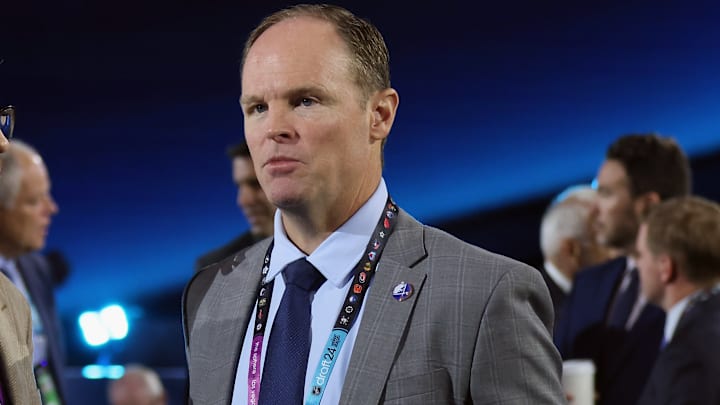Buffalo Sabres general manager Kevyn Adams' actions every offseason would suggest the franchise is one or two moves away from Stanley Cup contention. That's the furthest thing from the truth, and it's a significant problem as the team attempts to end a 14-year playoff drought.
Sara Civian of Bleacher Report highlighted the organization's continued failures in an article Friday exploring why NHL teams won't capture a championship in 2025-26.
"The Sabres are baffling not just because they hold the league's longest playoff drought at 14 consecutive seasons, but because it seems like management is in no real rush to fix it," Civian wrote. "Buffalo has made some decent moves as of late, but none of them ever feel like enough to get them out of this playoff drought. The replacement-level players are not the issue, and slight upgrades in that department are not the solution."
The front office's inability to acquire game-changing players — it's usually trading them away instead (Sam Reinhart, Jack Eichel, Ryan O'Reilly, etc.) — creates a problem the club's drafting and development focus hasn't been able to solve.
Analyzing Sabres' 2025 offseason
Once again, Buffalo's most prominent move of the summer saw the franchise trading away the most talented player in the deal. It sent JJ Peterka, who's already scored 67 NHL goals at the age of 23, to the Utah Mammoth in exchange for Josh Doan and Michael Kesselring.
Doan, who's got some untapped offensive potential, and Kesselring, who'll take on a key role alongside Owen Power on the Sabres' second pair, are solid players. They may enjoy long, successful tenures in Western New York.
Alas, the trade that led to their arrival maintained a long-standing trend: Buffalo sending away a proven NHL player for multiple assets it hopes will eventually match that same production levels. It's an endless cycle that's turned the organization into a league-wide laughingstock.
Beyond the Peterka deal, it was a highly unsatisfying offseason for the Sabres.
Their free-agent signings consisted of forward Justin Danforth, defenseman Zac Jones and goalie Alex Lyon. None of them are high-impact additions that move the needle.
Blueliner Conor Timmins was the only other notable trade acquisition. Again, he's a decent player but isn't somebody who alters the trajectory of the team in any meaningful way.
In all, Buffalo's 23-man roster will likely feature just six new players.
Buffalo's 2025-26 season outlook
So, for all intents and purposes, the Sabres decided to run it back with a group that missed the playoffs by 12 points last season. That's not a good look while trying to sell hockey to a tired, frustrated fanbase.
Buffalo is going to need a lot of things to go right if it's going to make a playoff push in 2026.
First and foremost, goaltender Ukko-Pekka Luukkonen must bounce back after a forgettable 2024-25 campaign where he posted an unsightly .887 save percentage. It's hard to see a path to the postseason if he plays at that level again.
Beyond that, the Sabres need continued elite production from Tage Thompson and Rasmus Dahlin, breakthrough seasons from Zach Benson and Jiri Kulich, a healthy year from Josh Norris and more consistency from Owen Power.
That's the problem. Buffalo needs all of those dominoes to fall into place just to have a shot at sneaking into the playoffs at season's end.
At some point, the standards must be raised. It must return to the level first established by team owner Terry Pegula when he purchased the NHL team in 2011.
"Starting today, the Buffalo Sabres' reason for existence will be to win a Stanley Cup," Pegula said at the time.
That burning desire to win no matter the cost evaporated over the years. Now the Sabres regularly leave millions of dollars in salary-cap space on the table every season.
In turn, perhaps it's no surprise Sabres fans have been subjected to losing hockey for so long, and the front office deserves all the criticism it receives until that changes.
